Meta Description:
Discover the life-changing benefits of healthy-meal-prep. Save time, boost energy, and live healthier with simple strategies and expert tips.
What is Healthy Meal Prep?
Healthy meal prep is the strategic process of planning, cooking, and packaging your meals in advance for the week. It’s not just for fitness enthusiasts—it’s a sustainable way to eat better, spend less, and gain control over your nutrition. Whether you’re aiming for weight loss, improved energy, or just a more organized kitchen, meal prepping offers a practical solution for today’s busy lives.
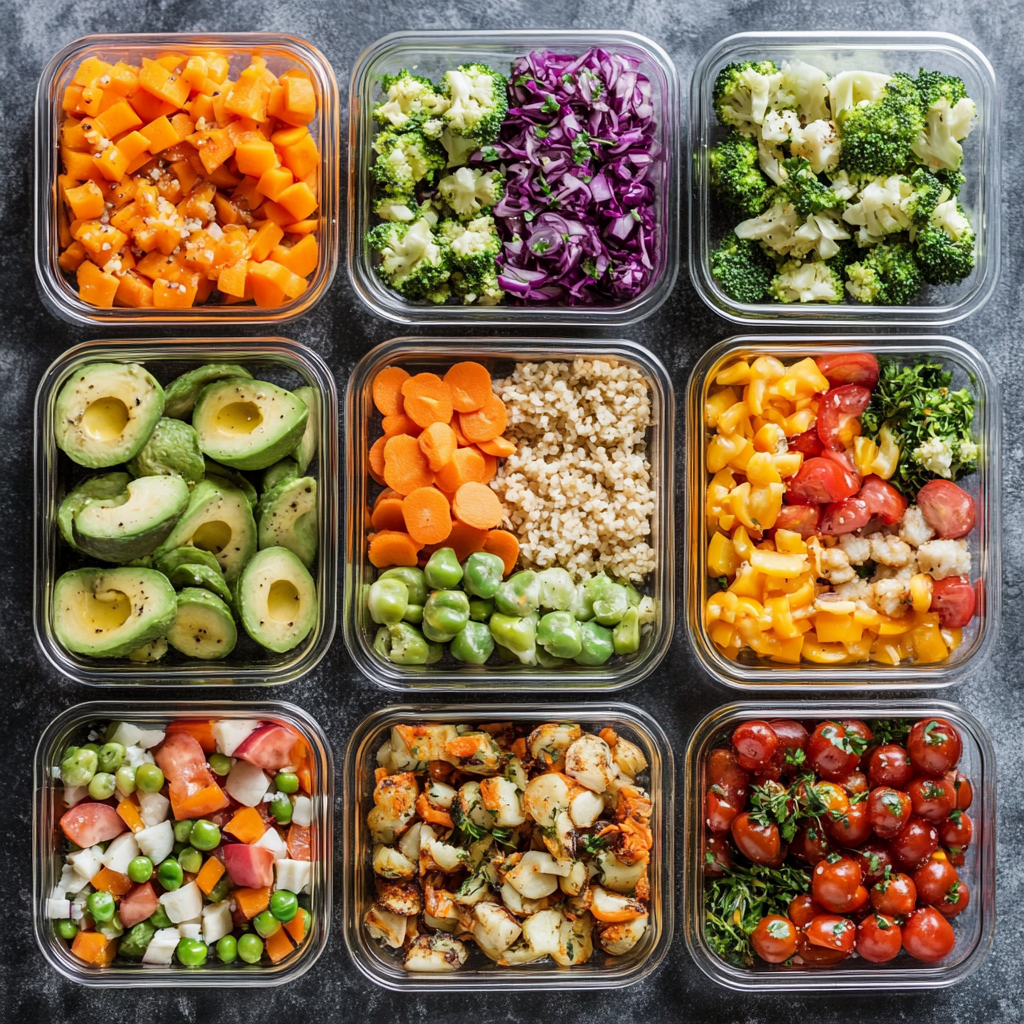
Health Benefits of Meal Prepping
Nutritional Control
When you prep meals, you’re in charge of every ingredient. This means no sneaky sugars or unhealthy oils slipping into your lunch. It allows you to customize meals to suit dietary needs—whether you’re gluten-free, vegan, or counting macros.
Portion Management
Healthy-meal-prep makes it easier to keep portions in check. You’re less likely to overeat because everything is measured and packaged ahead of time.
Consistency in Healthy Eating
Prepping keeps you on track. Instead of grabbing fast food or skipping meals, you’ve got wholesome options ready to go, helping you stick to your health goals.
Saves Time During the Week
Efficient Planning
Instead of cooking every day, dedicate 1–2 days a week to prep meals in bulk. This drastically cuts down kitchen time throughout the week.
Batch Cooking Tips
Cook grains, roast veggies, and grill proteins in large quantities. Store in portions for mix-and-match meals, so you never get bored.
Helps You Save Money
Avoiding Impulse Purchases
With a plan in place, you won’t be tempted to order last-minute takeout. That means more dollars in your pocket.
Bulk Buying Benefits
Buying ingredients like rice, beans, and chicken in bulk lowers grocery bills and ensures a steady supply of basics.
Supports Weight Management Goals
Calorie Tracking Made Easier
Since meals are pre-portioned, tracking what you eat becomes super simple. You’ll know exactly how many calories you’re consuming.
Reducing Unhealthy Snacking
Having meals ready to go reduces the chance of reaching for junk food out of convenience.
Reduces Daily Stress and Decision Fatigue
Less Time Thinking, More Time Living
“What’s for dinner?” becomes a question of the past. You’ll have a fridge full of answers waiting for you.
Building Positive Habits
Structure and predictability help you develop strong routines, which can lead to long-term wellness success.
Increases Energy & Focus
Fueling Your Body Right
When meals are nutrient-rich, you’ll feel more energized throughout the day. Say goodbye to sugar crashes and sleepy afternoons.
Avoiding Midday Slumps
Balanced meals prevent the dreaded 3 PM energy dip and help you stay sharp at work or school.
Encourages Family and Social Bonding
Cooking Together
Meal prep doesn’t have to be solo. Involve your partner, kids, or roommates for quality bonding time.
Eating Together with Purpose
With meals prepped, it’s easier to sit down and enjoy time around the table with others, enhancing emotional well-being.
Reduces Food Waste Significantly
Planned Usage of Ingredients
You’ll shop with a plan, which means using up all your ingredients instead of letting them rot in the fridge.
Proper Storage Tips
Glass containers, vacuum sealers, and freezer-safe bags help keep meals fresh and safe.
Builds Long-Term Healthy Habits
Creating a Sustainable Routine
It’s not a diet—it’s a lifestyle. Meal prep helps cement long-term behavior changes.
Meal Prep as a Lifestyle
Over time, healthy-meal-prep becomes second nature, just like brushing your teeth.
Tools and Containers for Successful Prep
- Meal Prep Containers: Look for BPA-free, microwave-safe containers with divided compartments.
- Kitchen Tools: Must-haves include a good chef’s knife, cutting boards, and an instant pot or slow cooker.
Common Mistakes to Avoid in Meal Prep
- Overcomplicating Meals: Stick to 3–5 ingredients per dish to make the process smoother.
- Ignoring Variety: Change your proteins, veggies, and spices weekly to keep things exciting.
Sample Weekly Healthy Meal Prep Plan
| Day | Breakfast | Lunch | Dinner |
|---|---|---|---|
| Monday | Overnight oats | Quinoa bowl w/ chickpeas | Grilled chicken & veggies |
| Tuesday | Smoothie + toast | Turkey lettuce wraps | Baked salmon + rice |
| Wednesday | Greek yogurt + fruit | Brown rice & tofu stir-fry | Shrimp tacos |
| Thursday | Egg muffins | Chicken Caesar salad | Lentil curry + naan |
| Friday | Chia seed pudding | Sweet potato + black beans | Zucchini noodles & pesto |
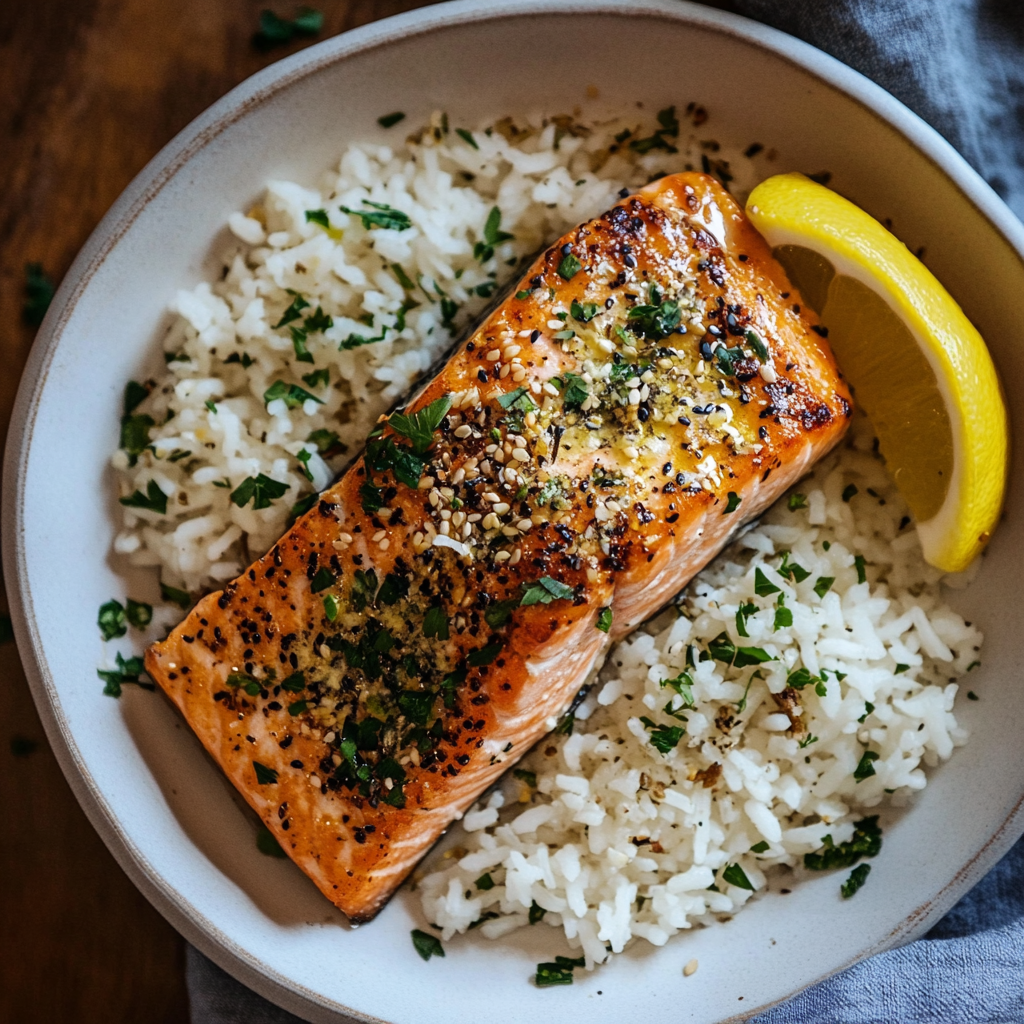
FAQ: Healthy Meal Prep
Q1: How long do meal-prepped foods last?
Most meals stay fresh in the fridge for 3–5 days. You can freeze extras to extend shelf life.
Q2: Can I meal prep without a microwave?
Yes! Use meals that can be eaten cold or invest in a portable food warmer.
Q3: Is meal prep safe?
Absolutely—just ensure proper storage, reheating, and sanitation practices.
Q4: What’s the best day to meal prep?
Sunday is most popular, but any day that suits your schedule works.
Q5: Can meal prep help with weight loss?
Yes, it supports portion control and healthy choices which aid weight loss.
Q6: Is it expensive to start meal prepping?
Not at all. You can begin with basic tools and scale up as needed.
Advanced Nutrition Strategies in Healthy Meal Prep
Balancing Macronutrients in Every Meal
A well-prepared meal should include a good balance of macronutrients: proteins, carbohydrates, and fats. Healthy-meal-prep enables you to plan meals that aren’t just tasty but nutritionally complete. Here’s how:
- Proteins: Include lean meats like chicken breast, tofu, tempeh, lentils, or fish like salmon and tuna.
- Carbs: Choose complex carbs such as brown rice, quinoa, sweet potatoes, or whole wheat pasta.
- Healthy Fats: Incorporate sources like avocados, olive oil, nuts, and seeds.
Use the “plate method”: half your plate with vegetables, a quarter with protein, and a quarter with carbs.
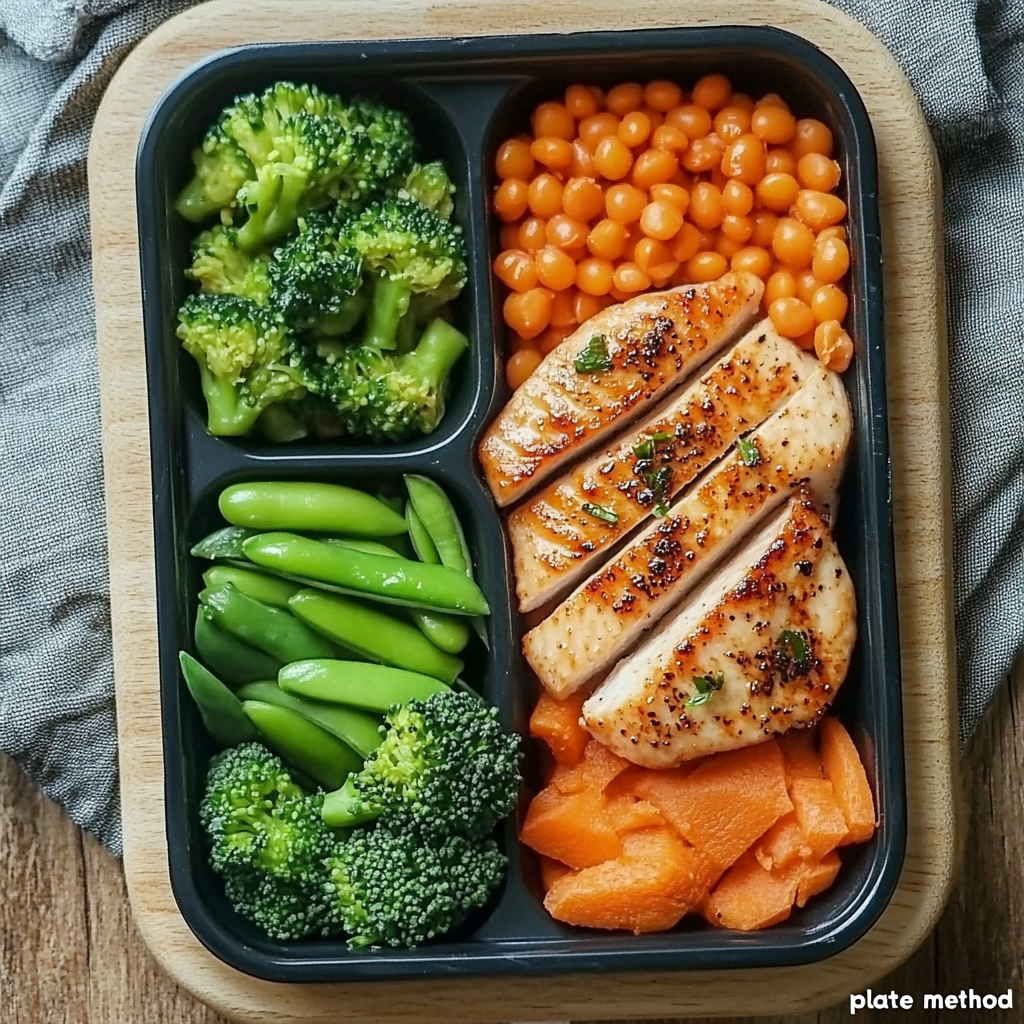
Incorporating Micronutrient Diversity
Micronutrients (vitamins and minerals) often go unnoticed. Healthy-meal-prep gives you the opportunity to:
- Rotate fruits and vegetables to get a range of nutrients.
- Include fermented foods (kimchi, yogurt) for gut health.
- Use herbs and spices like turmeric, garlic, and ginger which offer medicinal benefits.
A colorful plate is usually a nutritious one.
Healthy Meal Prep for Specific Diets
For Vegetarians and Vegans
Focus on plant-based proteins and whole grains:
- Lentils, chickpeas, black beans
- Quinoa, bulgur, barley
- Tofu, tempeh, seitan
- Cashew or almond-based sauces
Make sure to supplement or eat foods fortified with Vitamin B12, iron, and omega-3 fatty acids.
For Keto or Low-Carb Dieters
- Use cauliflower rice, zucchini noodles, or cloud bread.
- Protein should come from eggs, fatty fish, or poultry.
- Healthy fats include avocado, coconut oil, ghee, or nuts.
Meal prep helps you stay within your carb limits while still enjoying flavorful food.
For Intermittent Fasting Practitioners
Time-based eating is easier with healthy-meal-prep. Having nutrient-dense meals ready ensures you break your fast with high-quality food and avoid overeating.
Cultural and International Meal Prep Inspirations
Meal prepping doesn’t mean boring. Explore global flavors:
- Mediterranean Prep: Grilled fish, olives, hummus, couscous, and mixed greens.
- Asian-Inspired: Teriyaki tofu, jasmine rice, stir-fried veggies with sesame oil.
- Mexican Meal Prep: Chicken fajitas with bell peppers, guacamole, brown rice, and beans.
Diversity keeps your taste buds happy and your diet sustainable.
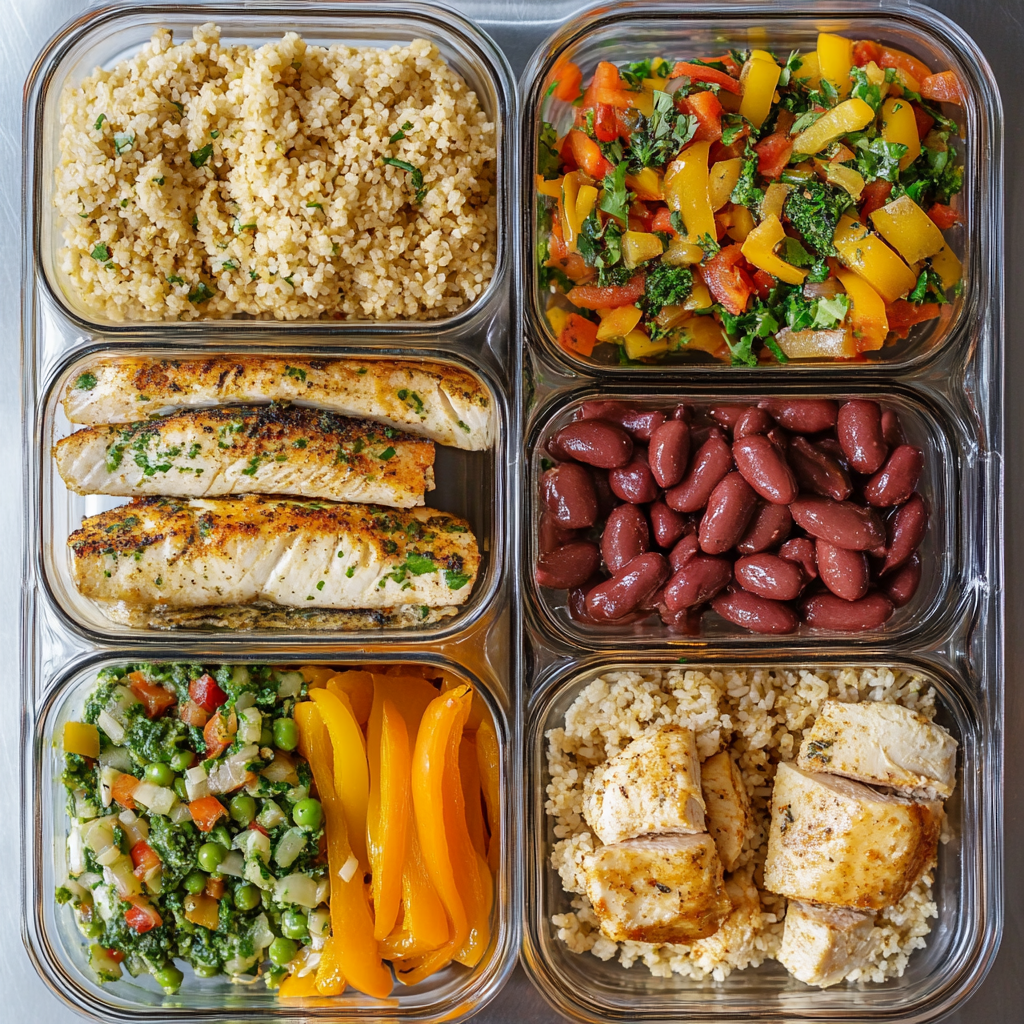
Meal Prep for Kids and Picky Eaters
Encourage healthy eating habits early with:
- Colorful bento boxes
- Finger foods like veggie sticks, hummus, cheese cubes
- Fun shapes and creative plating
Kids love participating—let them help choose their meals for the week to increase buy-in.
Meal Prep for Fitness Goals
Muscle Gain
Increase protein portions and add complex carbs:
- Grilled steak or chicken
- Sweet potatoes or oats
- Add shakes with protein powder and banana for post-workout recovery
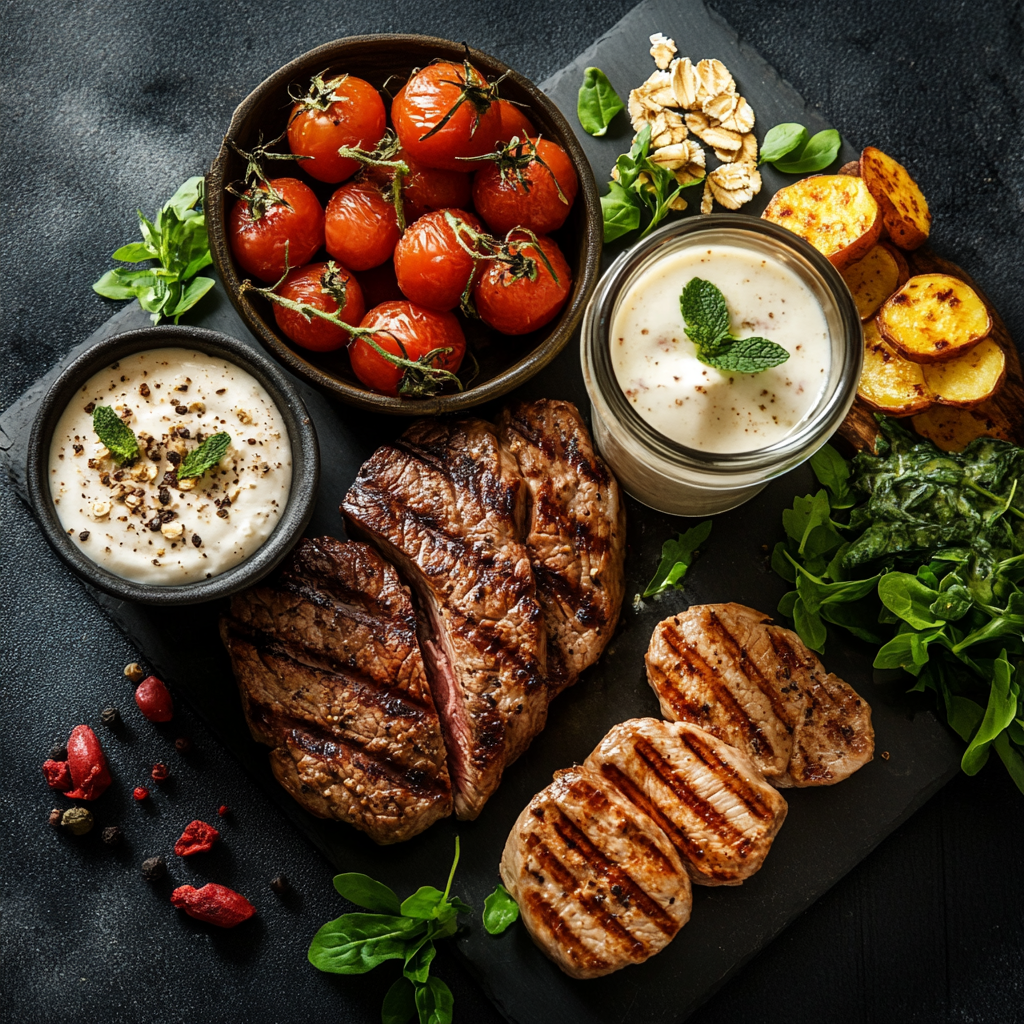
Fat Loss
Focus on lean proteins and fiber:
- Baked salmon with asparagus
- Cauliflower mash
- Reduce high-calorie dressings and sauces
Time-Saving Hacks for Busy People
- Use One-Pan Recipes: Saves time on cooking and cleanup.
- Pre-chopped Veggies: Invest a little more for ready-to-use fresh produce.
- Double Batch Cooking: Make dinner and next day’s lunch simultaneously.
Timesaving doesn’t mean compromising on health or flavor.
Mindful Eating and Meal Prep
Meal prep isn’t just about planning your meals; it’s about transforming how you relate to food:
- Sit down to eat, avoid distractions like screens.
- Take time to chew and savor.
- Use meals as moments of gratitude and mindfulness.
This improves digestion, satisfaction, and overall mental health.
How to Store and Reheat Prepped Meals Properly
- Refrigerator: Store meals for up to 5 days in airtight containers.
- Freezer: Label with date and contents. Best used within 3 months.
- Microwave or Oven? Reheat evenly and ensure internal temperature reaches at least 165°F (74°C).
Avoid reheating multiple times to preserve taste and nutritional value.
The Psychology Behind Meal Prep
Healthy-meal-prep provides a sense of structure, control, and achievement. Here’s why it works:
- Reduced Anxiety: Knowing your meals are handled reduces daily worry.
- Boosts Confidence: Taking control of your nutrition builds self-trust.
- Behavioral Reinforcement: Prepping each week reinforces your identity as someone who cares about their health.
Meal Prep and Sustainability
It also supports eco-friendly living:
- Less packaging from takeout or processed foods
- Buying local and seasonal ingredients reduces carbon footprint
- Composting scraps and reusing containers helps minimize waste
Being kind to your body and the planet goes hand-in-hand.
Digital Tools for Better Meal Planning
Utilize modern tech:
- Apps: Mealime, Paprika, Yummly
- Smart Kitchen Tools: Digital scales, smart slow cookers, and air fryers
- Spreadsheets or Notion Templates for grocery lists and planning
Let technology simplify your life.
Testimonials from Real People
Amanda, 34, Teacher:
“Meal prepping gives me time with my kids in the evening. I eat better and stress less.”
Carlos, 29, Gym Enthusiast:
“My protein intake has improved, and I never miss a post-workout meal. Meal prep changed my game.”
Helen, 51, Diabetic:
“I can monitor my sugar levels better by prepping low-carb meals. It’s been a lifesaver.”
Meal Prep Challenge: Get Started This Week
Want to make this stick? Try this 5-day challenge:
- Day 1: Plan 3 meals for the week.
- Day 2: Grocery shop with your list.
- Day 3: Prep 2 breakfast options.
- Day 4: Prep lunch & dinner batches.
- Day 5: Freeze portions and track your energy levels.
You’ll feel empowered and ready to continue.
More Frequently Asked Questions (Extended)
Q7: Can I meal prep if I live alone?
Yes, it’s a great way to avoid wasting food and save money on small portions.
Q8: How do I avoid eating the same thing every day?
Use different marinades, switch up side dishes, or rotate meals every 2-3 days.
Q9: Can I prep snacks too?
Absolutely! Pre-portion nuts, hummus with carrots, Greek yogurt, or fruit bowls.
Q10: What’s better—glass or plastic containers?
Glass is durable and better for reheating, but BPA-free plastic is more portable.
Q11: Is there a low-budget way to start?
Start with bulk staples—rice, beans, eggs—and simple vegetables. You can meal prep affordably.
Q12: Can I meal prep for someone with food allergies?
Yes. Just label containers clearly and prepare in a clean, safe environment.
Conclusion: Healthy Meal Prep is the Key to a Better Life
Healthy-meal-prep is a transformative practice. It’s more than just cooking ahead—it’s an intentional act of self-care. It helps you stay aligned with your health goals, budget more efficiently, reduce stress, and embrace a more mindful lifestyle.
In a world where everything moves fast, healthy meal prep invites you to slow down, plan intentionally, and nourish yourself with love and discipline. Start this week with healthy meal prep, one meal at a time. Your future self will thank you for choosing wellness and balance.
